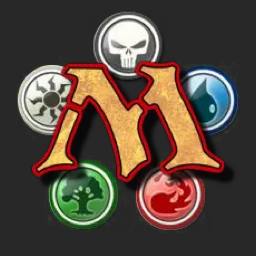- 3 Posts
- 8 Comments

 2·2 years ago
2·2 years agoHaha, fair question. I set up the scenery to save time, but I don’t like to put monsters on the table until their fight/scene is imminent. The players never know quite what they’re gonna face until I pull it from the monster cabinet. 😈

 191·2 years ago
191·2 years agoThis whole article is propaganda. If you want to see concern trolling, Millben is doing a ton of it by calling Obama’s remarks “arrogant” and “virtue-signaling.”
The fact is, religious nationalism is bad for any country that calls itself a democracy. Modi and his party should be taken to task both by Indians at home and by India’s fellow democracies.

 3·2 years ago
3·2 years agoThe handheld/console hybrid has been Nintendo’s dream for a long time. They even merged their handheld and console development teams a few years back, so I can’t see them abandoning the formula.
The only way I can see iterating on the Switch design is by dropping the dock in favor of a tv dongle to connect and stream wirelessly. This could allow for asymmetrical gameplay much like the WiiU (and would open the door to WiiU ports).

 2·2 years ago
2·2 years agoSounds like backwards compatibility is a lock—not that it’s a huge hurdle for today’s machines—since most of the account features involve software and save data. The retro game archives will probably make the jump too, since keeping them locked behind a paid membership is probably more lucrative than the Virtual Console ever was.
Anyone who has ever transferred their account to a new Switch knows how easy it is, for the most part. The biggest chore is redownloading software data, so maybe Nintendo will allow full game data to transfer over via SD card this time.

 0·2 years ago
0·2 years agoI’m always wary of basing campaigns around movies because there’s always the potential that the players will make radically different choices. Like, if the players decide not to stick around for the next fog, will that be okay?
To answer your question, campaign level is a function of the types of monsters you’re looking to include. Since these seem to be mostly humanoid soldier types, you probably want to stay low enough level for that kind of combat to be a danger.
Starting at level 2 or 3 would probably be appropriate to maintain the challenge. On the other hand, if you’re planning to pit the players against an army of dozens of soldiers, you may want to start at level 5 so they can mow them down properly.

 211·2 years ago
211·2 years agoI’m a huge proponent of physical media, but this is entirely unsurprising given Microsoft’s acquisition of Bethesda. Compared to Switch and especially Playstation, the Xbox has a much higher rate of digital game sales.
If Starfield were on PS5, it would get a disc release for sure, and Xbox would probably get one too for the sake of parity. But discs aren’t terribly important to the Xbox crowd, and that goes double for PC gamers.
Moreover, digital games are good for the publisher’s bottom line, so physical media is only going to exist as long as customers demand it. And PC and Xbox gamers simply don’t.

 3·2 years ago
3·2 years ago“Quadrant theory,” as I believe it is called, has been a useful tool for assessing which cards stay and which cards can go.
Basically, you break down the game into quadrants (e.g., early game, late game, post-boardwipe, waiting-for-wincon, stalemate, etc.) and consider how a given card will perform in various stages of the game.
A card that can be useful in more game quadrants is obviously preferable to a card that will sit in your hand if you draw it at the wrong time. For example, a counterspell can serve as removal when an opponent drops a threat, or it can protect your board while you go for the win.
This approach favors modal spells at the expense of powerful niche spells, so it should be employed judiciously. But it’s a good way of considering to what extent a card can carry its weight.


Oblivion is cool, but I’m with everyone else that want to see Morrowind remade first. I’ve been personally holding out for the Skywind mod for several years now. I just checked up on it and, yeah, they’re still workin’ on it.